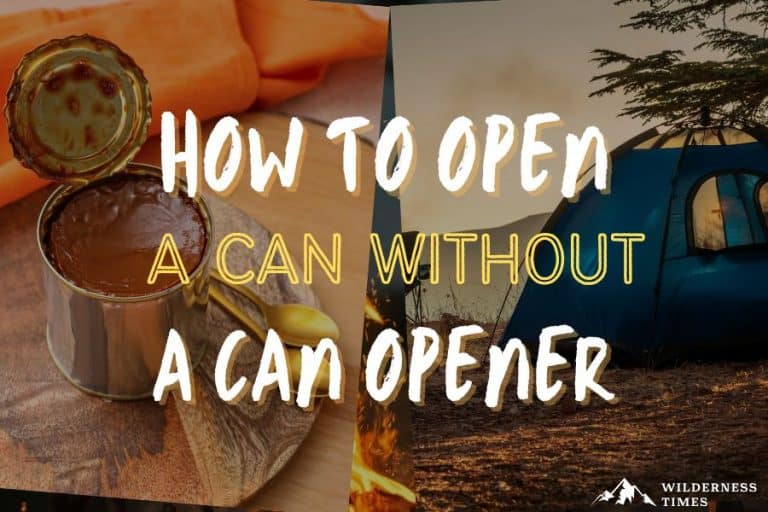Just as you’re about to make some baked beans, you realize that your can opener was left at home.
How could this happen? You even used a checklist!
Well, there’s no point in beating your head about it now. What’s done is done. The real question is – what to do now?
Lucky for you, I know how you can solve the problem! The same thing happened to me on my last camping trip.
Of course, I only realized it when it was too late. The only thing I could do at that point was get creative. And I really did.
I tried a bunch of different things. Some of them worked, some didn’t.
Today, I’ll share with you some alternative options you can use to open a can without a can opener:
Table of Contents
ToggleOpening Cans Without a Can Opener: 6 Different Methods
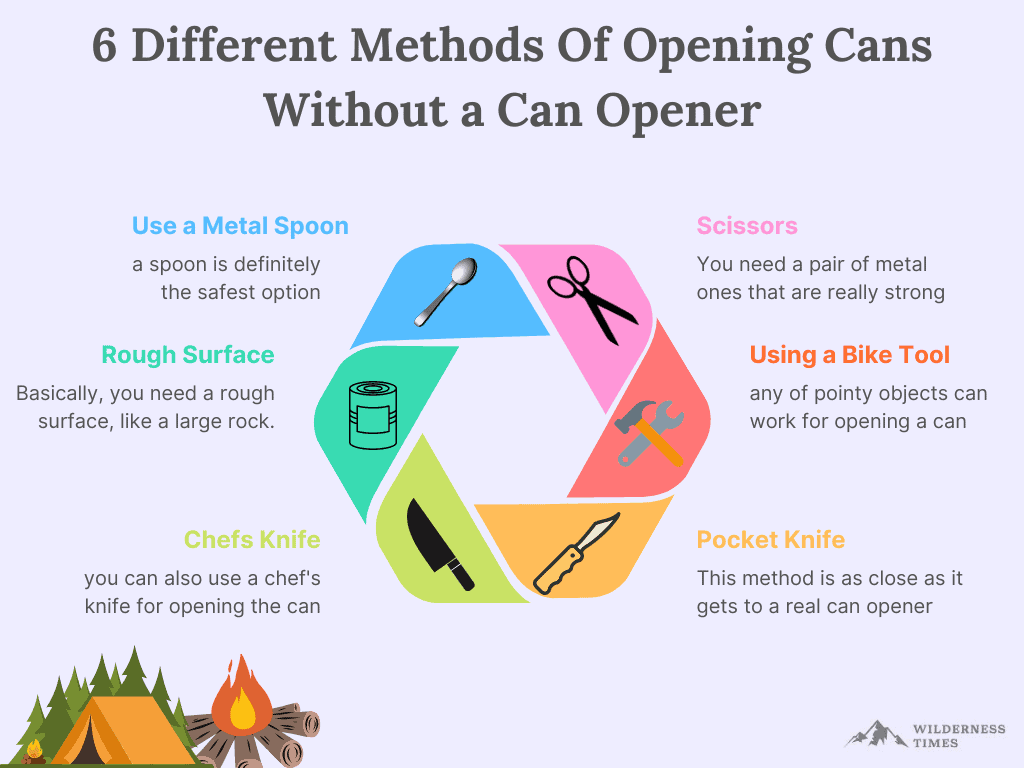
You’d be surprised how many things around the campsite can work as an alternative to a can opener.
Can’t think of anything? Here are six methods of opening cans without an actual can opener:
1. Use a Metal Spoon
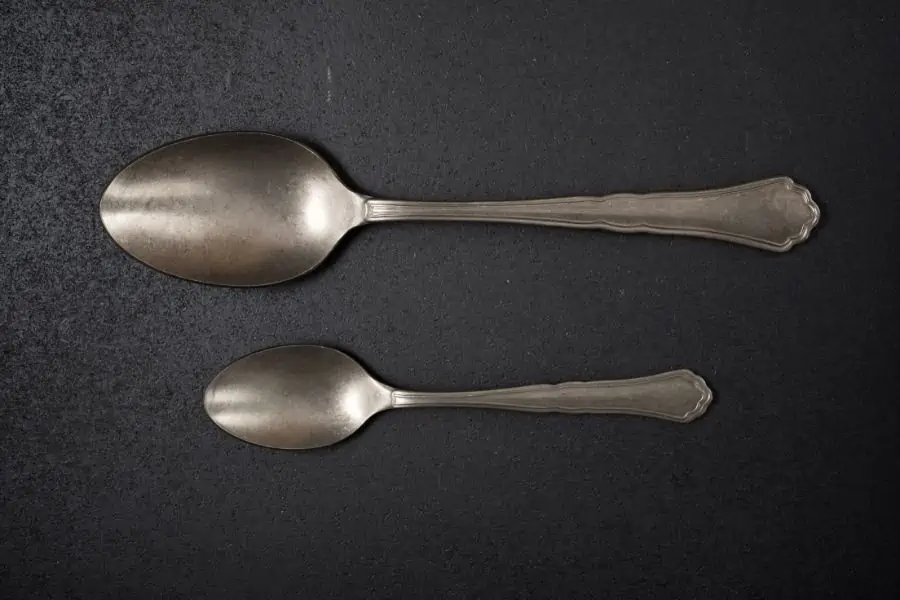
You might not have a can opener with you, but there’s a 99.9% chance you packed up utensils, including a spoon.
Now I know it might sound ridiculous, but a spoon is actually thin enough to pierce through the can yet sturdy not to break in the process.
For this, it has to be made of metal, not plastic.
Among all the alternatives to a can opener, a spoon is definitely the safest option available.
Compared to other options, the spoon doesn’t have any sharp edges that you can get hurt on.
Of course, the opened can itself can be sharp enough to get cut on, so you need to be careful regardless of the tool you’re using.
How to open a can with a spoon:
- Set the can on a sturdy surface, ideally at the height of your hips. Hold the can firmly in place with one hand, while the spoon is in the other.
- Your grip around the spoon should be firm, so that it doesn’t bend once you start applying pressure. Hold it around the part where the spoon head meets the handle – otherwise, that’s the part where it can bend.
- Position the tip of the spoon against the inner edge of the can lid, at a 90-degree angle. Face it so that the inside of the spoon bowl is facing the lid of the can.
- Rub the tip back and forth over a small area. This will create friction that will cause the lid to slowly start to get thinner.
- Once you pierce your way in, move to a few other spots around the lid and do the same thing. Do this on every inch or so.
- If the opening is large enough, dig the spoon under the lid and try prying it upwards.
- Continue doing this around the perimeter until the lid comes off.
2. Flat Rock or Rough Surface
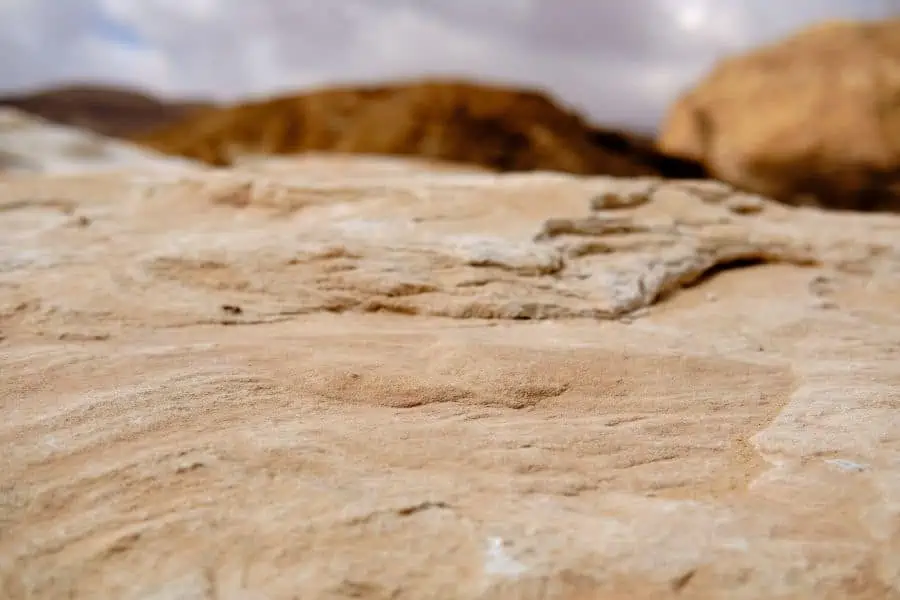
Let’s say you have practically nothing that can serve as a can opener alternative.
What if I told you that you can actually use your surroundings to open it up? And I’m not saying about smashing it down with a rock.
To be honest, this method can involve rocks, but it’s not as “smashing” as you might think.
Basically, you need a rough surface, like a large rock or even concrete, that will work as sandpaper.
This method might require slightly more time than others, but hey, at least you won’t remain hungry for much longer!
Prepare some paper towels or cloths to clean up any spillage.
Since you’re working your way through upside down, it’s practically unavoidable to have nothing leaking onto the surface underneath.
How to open a can with a flat rock or rough surface:
- Position the can upside down on the rough surface.
- Rub the can back and forth against the surface, as if you were scrubbing the floor. This will create friction and thin down the can lid.
- When you see moisture appearing on the surface, this means the lid is about to break. This is where you want to stop. Otherwise, the contents of the can will start to leak out too much.
- Grab a pocket knife, spoon or anything similar you might have at hand. At this point, the lid should be thin enough for you to pierce it. If you don’t have anything, you can always grab a smaller stone that you’ll use to knock the lid inwards.
- That’s all! The only thing that’s left for you to do is to clean up the mess you created while opening the can this way.
3. Pocket Knife
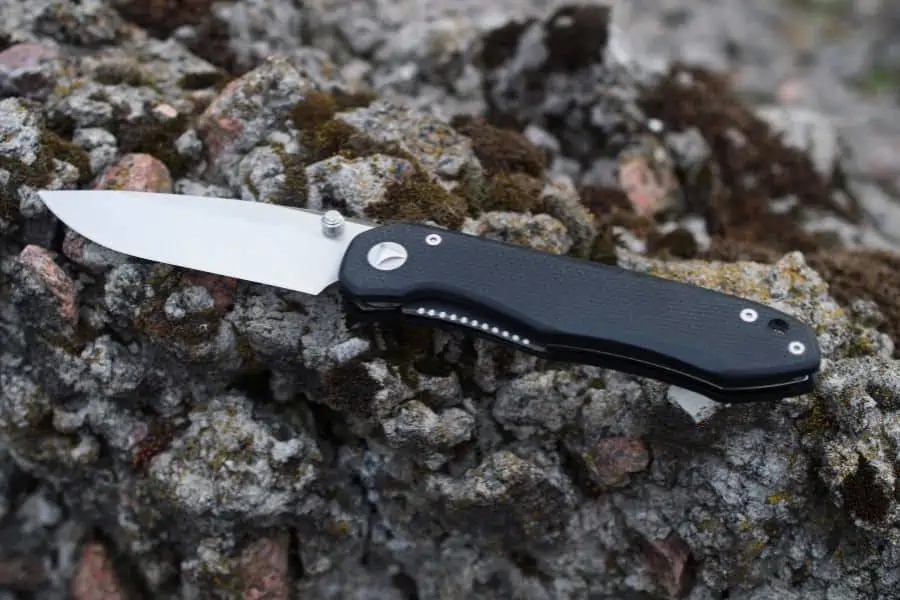
If you have a pocket knife (or any regular-sized sharp knife for that matter), you can also use it to open the can.
This method is as close as it gets to a real can opener. It’s relatively mess-free and, aside from the knife, requires a sturdy surface to put the can on.
While this method is rather easy, make sure you’re extra careful when using the knife.
If you don’t keep a firm grip and pressure at all times, it can slip and potentially cut through the skin.
Consider wearing gloves for extra safety while operating with a knife.
How to open a can with a pocket knife:
- Place the can on a sturdy and flat surface. Ideally, you want the surface to be around the height of your hips for better control.
- Grad the knife in your dominant hand, and position it vertically against the inner edge of the lid. Lock the knife into place with pressure, so that it doesn’t slip.
- Use your other hand to lightly smack the knife handle. This will slowly force the knife towards the lid, eventually piercing it. Don’t do it too hard, as the knife might end up slipping and hurting you.
- Once you pierce your way in, scoot the knife over and do the same thing again. Continue doing so until you’ve pierced holes around the whole perimeter. This should make the lid loose enough for you to open it up.
4. Chefs Knife
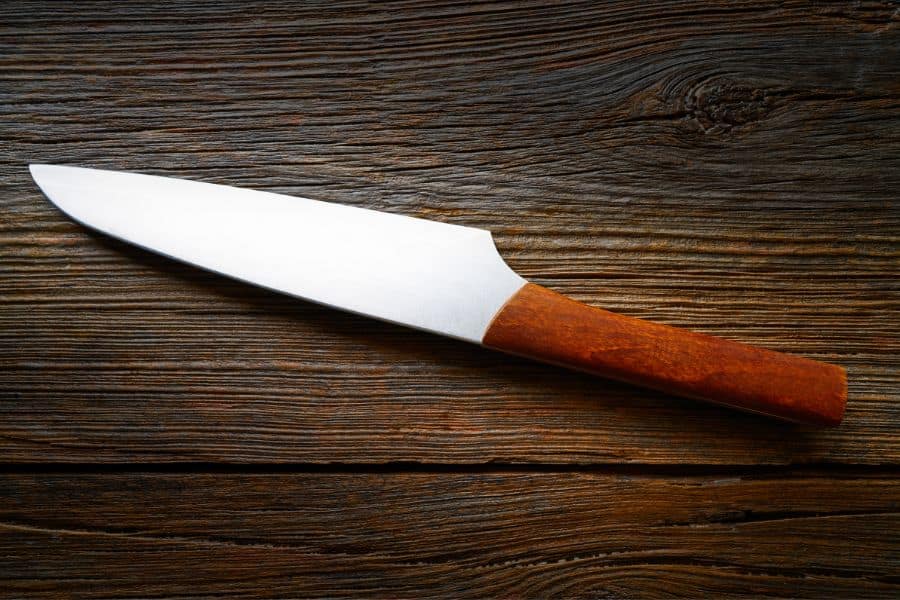
If you’re confident in your knife skills, you can also use a chef’s knife for opening the can.
For this method, it’s important to only use chefs and not a fillet or veggie knife.
The weight of the knife does half the job here, so doing it with any other type of knife wouldn’t be as effective.
How to open a can with a kitchen knife:
- Place the can on a stable surface. Ideally, you want something that’s about the same height as your hips.
- Grab the knife with your dominant hand, gripping it where the blade meets the handle. Make sure your fingers are away from the sharp side of the blade, so that you don’t accidentally hurt yourself. Keep your thumb on the side of the blade, to prevent getting cut by the “heel.”
- While firmly holding the blade, position the heel on the edge of the lid. Forcefully, press it down to piece the lid and create a hole.
- Do that for the whole perimeter of the lid. Once it gets loose, you can pry it off. Place the blade under the lid and carefully pull it upwards.
5. Scissors
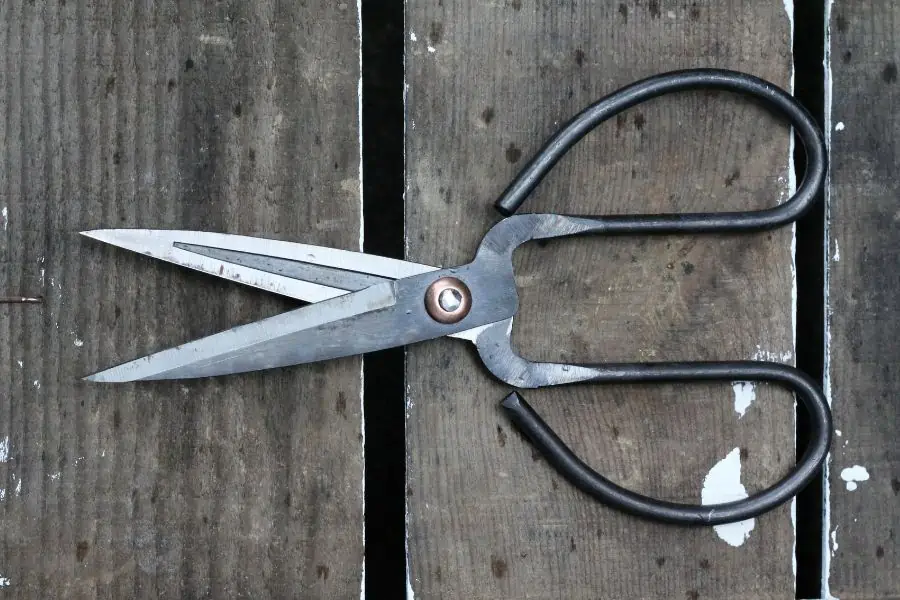
Scissors maybe not be a staple in your camping gear, but maybe they made their way into your gear this time.
Your first aid kit should also feature scissors, as you’ll need them for cutting bandages.
To make this clear, not all scissors will work for this. You need a pair of metal ones that are really strong.
Basically, they should be as hefty as garden shears, which are practically unbreakable. And I’m not even talking about the blades.
It’s the hinge part that can easily snap when you put too much pressure on it.
How to open a can with scissors:
- Hold the scissors in your dominant hand. While keeping the scissor blades closed, position them vertically on the edge of the lid, with the top of the blades facing down.
- Use your other hand to tap the scissors on the top part of the handle. You don’t want to smack too hard, as scissors aren’t usually as sharp as some other tools on this list, and might end up sliding and eventually hurting you.
- Continue tapping until you pierce your way in. Then move to some other point alongside the edge of the lid and repeat.
- Once the lid comes loose, use the scissors to pry it open.
6. Using a Bike Tool
Let’s say you’re bike camping. You surely have some bike tools packed up in the event you need to do a quick fix.
In that case, there’s probably a screwdriver or pointy plier in your bag. Well, any of these pointy objects can work for opening a can.
What’s also great is that they’re not as sharp as knives, so there’s less room for accidents.
This method is rather similar to using a pocket knife or scissors, with a few changes here and there.
How to open a tin can with a bike tool or pliers:
- Place a can on a sturdy surface.
- Hold the tool in your dominant hand, while keeping the can in place with the other one. If you’re using pliers, open them up as you’ll use only one side to pierce your way through.
- Start pounding with the sharp edge onto the edge of the lid in the same spot, until you make a hole.
- Repeat the process around the perimeter, until the can lid feels loose enough to be removed. Pry the lid open with the tool, while keeping your fingers away from the edge of the lid.
How to Stay Safe While Opening a Can Without a Can Opener
Safety is important, even with a proper can opener.
Personally, I somehow manage to get cut with pretty much any tool.
I attribute that to my clumsiness and not sloppiness when operating with different tools, as it seems like one can never be too careful when doing that.
Wearing gloves while opening a can without a can opener is the bare minimum you can do to stay safe.
The majority of these alternatives have sharp edges that can hurt you. In fact, the can itself is already too sharp, especially when opened in any of these unconventional ways.
When working with these tools, it’s best to keep the can on a sturdy surface that’s about the height of your hips.
This gives you the most control over the grip, so there’s less chance of the can slipping.
Never – and I can’t state this enough – hold the can between your legs.
While that is surely a stable position to work with, any of the tools you might be using for can opening can slip through your hands, potentially hurting your legs.
When poking a can with a sharp tool, always keep your moves small. Even though it might piece it faster, refrain from swinging too high.
If you miss the spot by as little as 1/64 of an inch, you can accidentally stab yourself.
FAQ
Is it safe to open a can with a knife?
Using a knife to open a can has its risks. A sharp blade that can pierce through aluminum is definitely sharp enough to hurt you as well, so you really need to be extra careful when operating with such a tool.
Always hold the knife with your dominant hand. If possible, wear safety gloves when operating with a knife.
What do you do if your can opener won’t work?
If your can opener decided to budge on you, then try any of these alternative methods that work for you.
There’s surely at least one thing from the list you have at hand. If not, you can always resort to using a rough surface and sanding the can.
How to open a can with a fork?
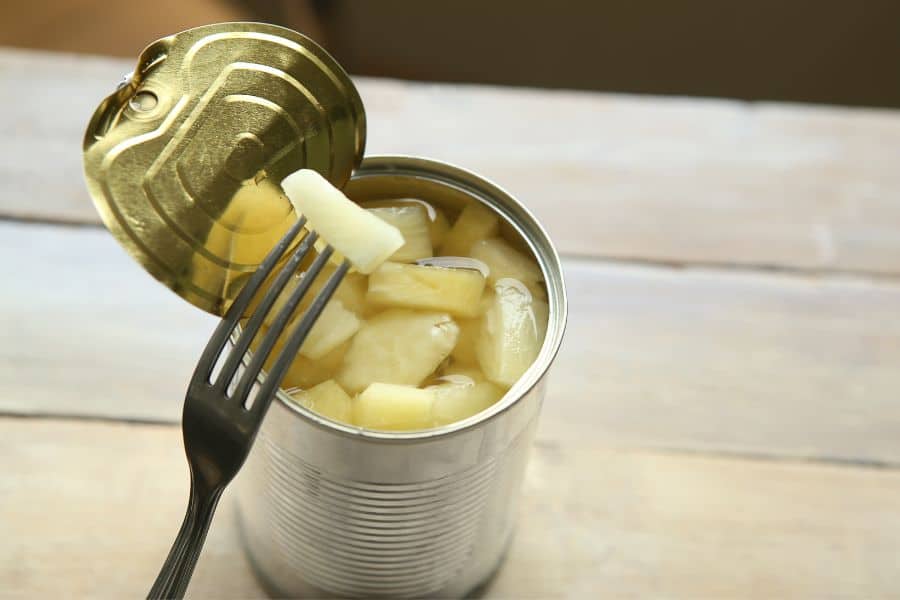
You can use a fork the same way you’d use a spoon to open the can. But instead of using the head of the spoon to pierce the can, you want to use the handle instead.
A fork is much easier to bend compared to a spoon, plus the handle offers more surface to apply the pressure.
What’s the best option/method to open a can safely?
Among all the alternatives listed, using a chef’s knife is probably the fastest and least sloppy way to open a can.
However, since that’s a very sharp tool, you need to be extra careful when using it.
But as far as safety goes, using a spoon or rough surface is the least risky option.
Except for the can itself, there’s nothing sharp to get cut on. Of course, if you’re not focused, you can always accidentally hurt yourself with any tool.
How do you open a can without tools?
If you don’t have anything at all, then use any rough surface you can find around.
This can be a large rock, but even concrete works. Turn the can upside down, and sand the lid over the surface.
Over time, this should thin it out so that can be pierced with slight pressure.
How do you open a can without ruining it?
No matter how careful you are, you’ll damage a can whichever method you decide on using.
But with sharp tools, like a knife or screwdriver, you’ll be able to open it with precision and very little damage.
To Sum Things Up
If you leave your can opener at home, it’s not the end of the world. You probably have some sharp tools that you can use instead, such as a knife or a pair of scissors.
And even if you literally have nothing, you can always find some rough surface to use instead.
Whichever method you decide on using, make sure you’re taking all the precautionary measures to open the can as safely as possible.


